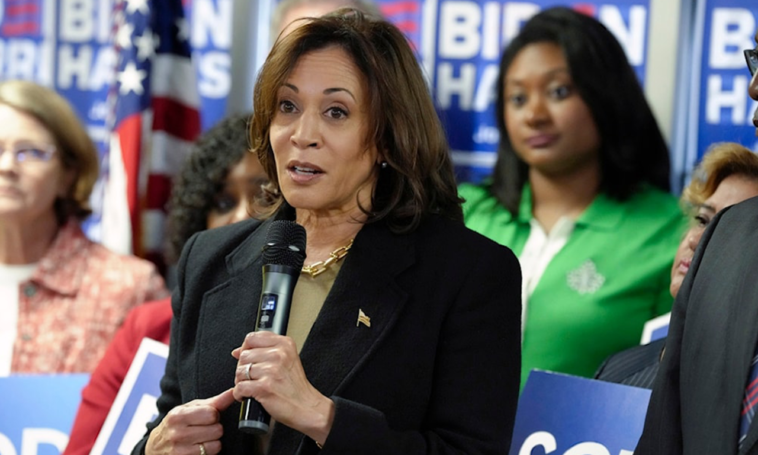Recent polls, capturing the pulse of American voters, reveal a substantial drop of over 5% in Vice President Harris’ approval ratings since January, settling at 36.3%.
The significance of this decline becomes even more pronounced when compared to her predecessor, Joe Biden, who himself grapples with the distinction of being the least approved U.S. president.
A closer examination of these polls places Harris in the shadow of former vice presidents such as Mike Pence, Al Gore, and Dick Cheney, all of whom surpassed her in popularity.
The speculation surrounding the intensity of Harris’ decline hints at underlying concerns related to President Biden’s age, a topic that has been a consistent point of discussion. Biden, at 80 years old, is the oldest president ever elected, and this has triggered unease among voters.
A September poll revealed that a substantial 77% of voters, including 65% of Democrats, admitted to feeling discomfort about Biden’s age. The underlying apprehension centers on the possibility that if Biden were unable to complete his term, Harris would step into the presidential role.
Unfolding against the backdrop of the re-election landscape, Biden faced formidable opponents with unexpectedly higher polls. However, Democrats opted to cancel the primary, leaving Biden as the lone option in states like Florida, Tennessee, Massachusetts, and North Carolina.
This strategic move, coupled with Harris’ declining popularity, casts a historical shadow on her first term, drawing comparisons to Dan Quayle’s similarly low favorabilities during his vice-presidential tenure.
The Republican narrative gains traction, asserting that a vote for Biden essentially translates to a vote for Harris, a point that is particularly emphasized given the concerns surrounding Biden’s age.
Democrats initially hoped that Harris, with her youthfulness, would counterbalance Biden’s maturity. However, multiple polls indicate otherwise, posing a substantial challenge for the Democratic National Committee.
In the midst of public dissatisfaction with the Biden-Harris administration, a familiar figure emerges onto the political stage: Donald Trump.
The former U.S. president seizes the opportunity to present himself as the harbinger of a “better America” during an event in Cedar Rapids, Iowa. Trump, in characteristically grandiose fashion, describes his re-entry into politics as the “greatest comeback in history.” Importantly, he frames this return as a “righteous crusade” against the current President, Joe Biden.
Trump’s choice of words is deliberate, emphasizing that the intended comeback is not merely political but extends to encompass the entire nation. “It’s going to be the greatest comeback in history — I’m not talking about comeback politically because I don’t care about that — it will be the greatest comeback for a country,” declares Trump, seeking to position himself as a transformative force that transcends the political arena.
The audience responds emphatically, erupting in applause as Trump articulates his vision of this “crusade” freeing the people from what he perceives as the shackles of the Biden administration, labeling them as “criminals.” Trump strategically leverages the discontent with the existing administration, presenting himself as the antidote to what he portrays as a suboptimal status quo.
The tapestry of American politics is woven with threads of declining approval ratings, age-related concerns, and strategic political maneuvers. Kamala Harris finds herself at the center of this narrative, grappling with an approval dip that has historical echoes. Simultaneously, the stage is set for Donald Trump’s return, capitalizing on dissatisfaction and projecting himself as the agent of a transformative comeback for the nation. As the political landscape evolves, these dynamics will likely continue to shape the narrative of American politics in the foreseeable future.



